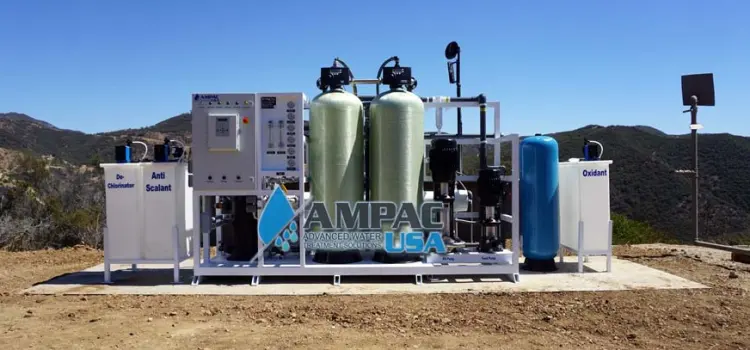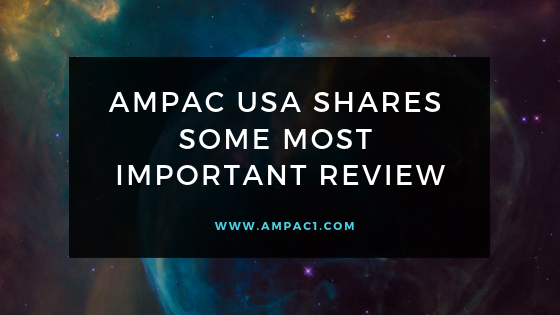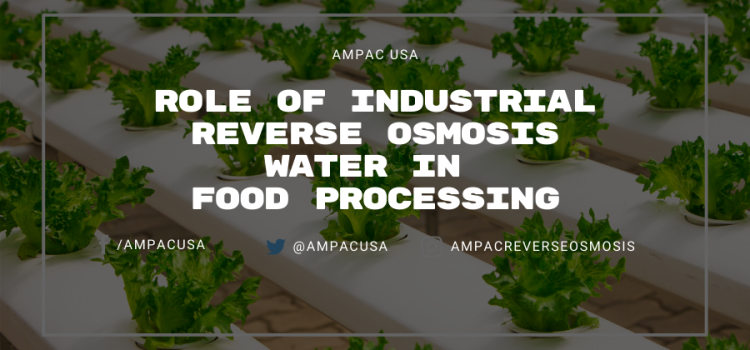What is industrial wastewater?
The reject water which is a by-product of all the processes that take place in a factory or manufacturing facility is industrial wastewater. This water has been used as a part of making a commercial product for the masses.
Water is used for a variety of needs in industries, some of which include cooling, cleaning, fabricating, processing, washing, diluting or even transporting a product. It is used extensively for smelting facilities, chemical industries, petroleum refineries, food, and paper industries.
Unlike residential or commercial wastewater, industrial rejects are far more hazardous for the environment and unfit for use. It heavily contains industrial chemicals, metals, suspended particles and more contaminants as compared to even municipality reject.
What constituents does the wastewater have?
Industrial waste contains a variety of hazardous constituents that make it difficult to reuse in the same condition. Some of these are:
- Suspended solids that eventually form sludge and anaerobic conditions for the aquatic environment when discharged untreated.
- Biodegradable organics consisting of majorly proteins, fats and carbohydrates. Releasing untreated waste can cause an imbalance by depleting natural oxygen and create septic conditions.
- Industrial chemicals and water conditioners used in the pre-treatment can cause chemical reactions making undesirable by-products causing harm to the surroundings.
- Pathogens can always be present in the reject through industrial processes and lack of treatment can enable the spreading of various diseases.
- Nitrogen, phosphorus, and carbon are found in large amounts and when released can cause land and groundwater pollution other than leading to undesirable aquatic life.
- Heavy metals which are used for the manufacturing processes need to be removed in case the water has to be reused again.
- Inorganic constituents like calcium, sodium, and sulfate that like heavy metals need to be eliminated in case of reuse.
Why treat wastewater?
In a time when good quality water is increasingly becoming scarce, treating industrial wastewater is necessary for two major reasons.
The harm of this wastewater as mentioned above to the environment is immeasurable. Releasing untreated reject causes land, groundwater and water pollution in the lakes, rivers, and streams. Since the 1950s the rejected water has caused many problems for the environment surrounding industries threatening the lives of not only plants and animals but also humans in the process. Even the initial process of pre-treatment by seawater desalination for industries near the shore can cause brine influx in the environment causing a number of problems. For this reason, every industry is required to treat their wastewater until a standard is achieved. This standard comes directly from the EPA Effluent Guidelines and may or may not additionally come with local regulations. These guidelines and regulations are created keeping in consideration the natural order of life around the manufacturing facility and the standards are made so that a facility has a minimum negative effect on the environment.
The second major reason is the need for consistent water quality. Industries require a particular quality of water for their manufacturing processes and so they initially treat the incoming supply. Once wastewater is created and discharged, the process starts all over again. With a reduced supply of water available everywhere, it is easier and profitable for businesses to recycle the wastewater to quality of their requirement and reuse it for their purposes. It saves the additional pre-treatment and supply costs incurred on the business.
How to treat wastewater?
Depending on the nature of the wastewater, a perfect plan is created for treating. In case it is grey water, the treatment can easily be done with chemicals. However, more often than not, the industrial wastewater is heavy with metal, chemical, organic and inorganic contaminants requiring a much intensive filtration. The principle of Industrial Reverse Osmosis, systems that are used for pre-treatment, can be used for industrial wastewater treatment as well. However, this is the case when the water is light with contamination. For heavier wastewater, a number of customized processes are required for every industry.
- Blackwater from E&P (exploration and production) typically involving advanced oil-water separation technologies
- Black and grey water treatment from industrial operations typically involving dynamic sequencing batch reactors (SBR)
- Food manufacturing and other high-organic content wastewater, potentially through membrane bioreactors (MBR)
- Water reclamation, a value-adding activity increasingly used worldwide to mitigate the depletion of groundwater sources, using reverse osmosis after initial mitigation of contaminants
What is Waste Water Management?
The main objective of wastewater management is to secure clean water. This means by treating the rejected amount, a management system provides good quality water clean enough to be used for residential, commercial as well as industrial use. This also means that it is safe to be released in the natural water cycle causing minimum harm and thus producing commercial products without any environmental consequences. Usually, this initiative is undertaken by governments and collaborations with industries. However, based on the impact on nature that industry has, any business or brand can implement such a management system for recycling and reuse. This initiative is used for the replenishment venture where the water is sent to the ground to replenish the exhausted aquifers and groundwater tables.
Does my business require Waste Water Treatment?
It completely depends on the industry the business is in. E-commerce companies barely use any water for production and so have no major impact environmentally. However, industries like dairy, energy, food, oil & gas, petroleum, breweries, pharmaceutical, chemical, hydroponics, mining, hotel & hospitality, aerospace, manufacturing, ocean, and marine require the use of wastewater treatment systems. If your business belongs to any one of these industries, you need to get a treatment system for the rejected water. Additionally, if your business does not belong to any of these industries but uses a large amount of water as a part of the operating process, get in touch with AMPAC USA for more information.
Is necessary to have such a system?
You can know more about whether it is necessary to have a system based on the quality of wastewater the facility produces. If the quality is in compliance with the standard prescribed by EPA and local regulatory authorities, one does not need to get such a system. To know for sure, contact AMPAC USA and ask for an expert to test the quality of wastewater. Our experts will also keep you updated on the current EPA guidelines and local regulations and will let you know whether the wastewater is in compliance with the prescribed standards or not. Based on the result of the test, the expert will also suggest a suitable option for a treatment system, if needed.
What kind of set up do I need?
Different industries have different requirements based on their effluent discharge. Given below is general information of the different set-ups AMPAC USA provides for industries.
| Set Up Type | Brief | Industries |
| Grey Water Treatment | Used for rejected water with minimum need for treatment. Can be used as potable water or for residential purposes after additional water purification by Reverse Osmosis treatment. | Home & Offices e-commerce |
| Crude Oil Separation | Used to separate oil derivatives and hydrocarbons from the water. Polymer Sob that absorbs all impurities and forms a solid block which can be easily removed | Oil & Gas
Ocean & Marine Food & Dairy |
| Membrane Bio-Reactor (MBR) | State-of-the-art high-end wastewater treatment system meant for mitigating contaminants high in organics. Used for sewage, organic wastewater. | Hotel & Resorts
Food & Dairy Breweries |
| Dynamic Sequence Reactor (DBR) | Successfully treats wastewater in multiple industries. Can easily treat effluent induced water of any level with ease. Uses equalization, aeration, and clarification in a single batch process. | Mining
Energy Chemical Pharmaceutical Aerospace |
The above information is a general idea of which industries require which setups. However, consult with an expert before deciding on a setup. The correct way to decide on the best product is to first understand the effluent discharge and then get a suitable set-up for treatment.
Can the facility use treated wastewater?
Many facilities reuse the treated wastewater by additionally treating it with Reverse Osmosis. This eliminated the pre-treatment process as the treated water can easily be put through RO procedure without further ado. Based on the requirement of quality in manufacturing and production, the treated reject can be converted into quality raw material thus giving an endless sustainable cycle. Sometimes, the water may be too harsh or far gone to be used in the manufacturing process itself. In such cases, treatment systems still have to be used to bring down the contamination under the prescribed standards. To know whether a facility can reuse the treated water, know the effluent level in the wastewater (A), the required quality of water in the manufacturing process (B) and the set-up required to get from A to B. It may not be in the best interest of the company to get a set up that costs more in operation. For the most optimal solution, get in touch with AMPAC USA to let you know the best way for sustainable operation at the facility.
What would the setup of a typical WWTS cost?
Cost of a WWTS system is dependent on various factor. The costs incurred increase with every capacity in between and are not only based on the increase in capacity level but also includes the cost of additional equipment or parts used to make it an optimum product. The cost is also dependent on two major factors.
- The effluent quality and amount in the wastewater after an average manufacturing cycle, what are the local and EPA wastewater discharge standards for that particular area and facility.
- The amount of wastewater that needs to be processed each day and how fast.
For an industrial level WWTS of 150,000 GPD capacity, for different industries, the cost can range anywhere between $200,000 to $ 1.5 million. This includes the needed design, engineering, equipment, installation, and start-up. Complex streams, higher flow rates, and higher effluent quality standards will tend to push the cost upwards.
How to choose the best system for a facility?
A simple way to choose an appropriate wastewater treatment system for your facility is to first recognize the water characterization of the facility, the local regulations of discharge from the facility and the outcome for the water treatability and pilot test.
The biggest factor that influences the decision is the kind of setup needed to treat the reject. This can be easily selected by knowing the characteristics of the wastewater. Do the facility process foods and the waste is heavy with BODs, oil, and grease? Do the processes inside include manufacturing metal products leaving the water heavy with metals like zinc, lead, iron, nickel, and suspended solids? Does the wastewater contain high levels of BOD and COD that can deplete natural oxygen? An answer to the question of what does your wastewater dominantly consists of can help you figure out which kind of set up is needed.
Second, it is crucial to know the discharge standards for the effluent into the environment and municipal. If you choose to release the wastewater into the nearby surroundings in the United States, you will need an NPDES Permit (National Pollutant Discharge Elimination System). This permit is enforced under the Clean Water Act that monitors the discharge of industrial waste into the environment and regulates the pollutants that are dumped. This permit has a set standard that does not allow any industry to discharge waste above a specified standard. If you wish to discharge the wastewater to the municipality, they would want it to be treated. Check with the local Public Owned Treatment Works (POTW) to take into account their standards of effluent discharge before buying a setup.
The third step would be to run a treatability test on the effluent created at the facility. It helps you with 3 major things. It proves whether your assumption of contaminants in the effluent discharge was correct or not. It further describes in detail the characteristics of the effluent quality and it offers the best optimum solution of set up to be installed to tackle the contaminants. Once this crucial step is done and the contaminants are confirmed, it is advisable to first run a pilot test to exactly know for sure if the selected set up option is what you need.
What problems can be expected with an installed WWTS?
Even after carefully considering every factor, it is expected of the WWTS to present certain challenges. The operational problems are either unforeseen or basic that can either way cause an issue in the day to day operations. Some of these problems are:
- Initial start-up of a set up may fail to treat the wastewater optimally due to variations in the effluent quantity or quality.
- These setups struggle with the above problem due to poor or under the design of parts, segments and the equipment.
- Consistent mal-operation caused by lack of skilled labor to operate the equipment.
- Increasing energy consumption that could indicate a need for maintenance or repair of a particular part.
- Need for manual supervision ensuring 24-hour support can be tedious and increased supervision can be expected in case of changes in influent or seasonal changes.
- Sludge production while physical, chemical and biological treatment can pose an issue in disposal if the amounts are high.
- Activated sludge plants require costly and spacious settling tanks and aeration basins. It has a larger footprint in terms of impact and investment and so poses a challenge.
How can these problems be resolved?
These common problems can easily be avoided or resolved.
- Choose companies that design standard wastewater treatment systems and have a reputation for quality. This can ensure that the variations will hardly affect the outcome of a setup.
- The company you choose is important as the more experience and reputation they have; more are the chances of you to get the best design of the setup. Select only the most preferred companies like AMPAC USA with 30 years of experience.
- Ensure to employ skilled labor that can handle the operations of a WWTS system without hesitation. Make sure the staff is well trained so they know when to raise a red flag in case of breakdowns.
- Regular maintenance of any equipment helps increase the lifespan and ensures smoother operations day in day out. Never miss a scheduled maintenance or equipment check.
- Select a long-term destination for sludge to be discharged at can be vital to sustainably function facility. Usually recycling it in agricultural purposes is the best option as it contains organic nutrients essential for plant growth.
- Invest in advanced technologies that help reduce footprints because smaller footprints mean cost savings in land and raw material.
Wastewater treatment systems are essential to the sustainable growth of any industry. If you are looking for an optimal wastewater treatment product or have any queries regarding the product, you can contact AMPAC USA. We offer treatability testing, set-up design, engineering, installment and start-up at your disposal. Our experts can help you choose a suitable product and assist you to stay within the prescribed regulations.
AMPAC USA : (909) 548 4900










